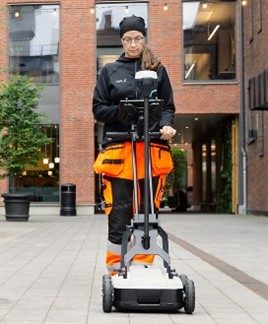HISTORY


- Products
- Applications
- Application Areas
- Archaeology
- Asphalt Investigations
- Bedrock Mapping
- Concrete and Rebar
- Dam Safety
- Groundwater Contaminants and Salination
- Groundwater Prospection
- Ice and Snow Investigations
- Mineral Exploration
- Mining operations
- Post mining operations
- Road Investigation and Mapping
- Tunnel Inspection
- Utility Locating
- Waste deposits
- Methods
- Case Stories
- A comparative study of Single Channel and Hand-Pushed Array Ground Penetrating Radar (GPR) Systems for Utility detection
- Manganese ore exploration using electrical resistivity and induced polarization methods
- Joining geotechnical investigations with geophysical results
- Subsurface evaluation of copper ore deposits
- Resistivity investigations for a water storage dam in Pakistan
- Mapping of hydrocarbon contaminants with Electrical Resistivity Tomography (ERT)
- Mapping fiber optic cables with GPR
- Resistivity investigations in the Scottish Highlands
- Resistivity Investigations to map Groundwater sources
- GPR and Resistivity working together
- GPR investigations at the Castle of Monteagudo
- GPR for utility mapping & detection
- Mapping the depth to bedrock
- Bedrock and Aquifer mapping
- Marine geophysical survey in subway extension project – Res/IP
- Utility locating with MALÅ MIRA in Italy x 4
- Fresh Water intrusion in saline aquifer
- Successful prospecting of groundwater in Bolivia
- Large scale utility mapping
- Mapping of heat pipes and electrical wires
- All Case Stories
- Opinion pieces
- A hard-working field geophysicist
- An investigation into spurious frequencies
- Endless resources. Not.
- Geotechnical Engineers and Geophysicists – the perfect match
- Geotechnical Engineers and Geophysicists – the perfect match Part II
- Ice and Snow, or maybe thaw
- Our crowded subsurface – Part I
- Our crowded subsurface – Part II
- Our finite groundwater resources
- Our planet, not a waste dump
- Our Production Wizards
- Help articles
- Application Areas
- Support
- Rental
- Contact
- Events
- News
- About
- Get quote





 A note in Teknisk Tidskrift, vol. 37. 1930 on changes in ownership and the board
A note in Teknisk Tidskrift, vol. 37. 1930 on changes in ownership and the board


 Atlas Copco ABEM logo from 1970
Atlas Copco ABEM logo from 1970  ABEM Terrameter SAS 300B
ABEM Terrameter SAS 300B
 The SGAB logo (as seen in 1988) which was later also used by MALÅ G(eo)S(cience) AB
The SGAB logo (as seen in 1988) which was later also used by MALÅ G(eo)S(cience) AB RAMAC Borehole radar
RAMAC Borehole radar The MALÅ Geoscience logo from 1994
The MALÅ Geoscience logo from 1994 
 MALÅ RAMAC CUII GPR control unit
MALÅ RAMAC CUII GPR control unit The ABEM Vibraloc, for vibration monitoring
The ABEM Vibraloc, for vibration monitoring ABEM Terrameter LS, for ERT measurements
ABEM Terrameter LS, for ERT measurements The CART, the first commercially available 3D GPR array system in the world
The CART, the first commercially available 3D GPR array system in the world The first archeological investigation with the MALÅ MIRA system, 2008 in Birka
The first archeological investigation with the MALÅ MIRA system, 2008 in Birka


 ABEM Terraloc Pro seismic equipment
ABEM Terraloc Pro seismic equipment MALÅ EasyLocator Core
MALÅ EasyLocator Core MALÅ MIRA Compact
MALÅ MIRA Compact